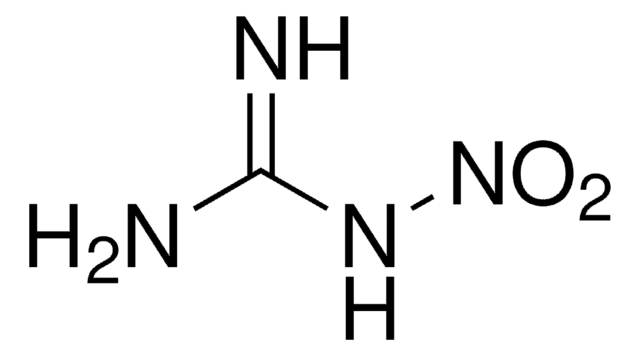おすすめの製品
グレード
certified reference material
特徴
Snap-N-Spike®/Snap-N-Shoot®
包装
ampule of 1.2 mL
メーカー/製品名
Cerilliant®
濃度
1000 μg/mL in acetonitrile
アプリケーション
environmental
フォーマット
single component solution
保管温度
−20°C
SMILES記法
CC1=C([N+]([O-])=O)C=C([N+]([O-])=O)C=C1[N+]([O-])=O
InChI
1S/C7H5N3O6/c1-4-6(9(13)14)2-5(8(11)12)3-7(4)10(15)16/h2-3H,1H3
InChI Key
SPSSULHKWOKEEL-UHFFFAOYSA-N
類似した製品をお探しですか? 訪問 製品比較ガイド
関連するカテゴリー
アプリケーション
法的情報
シグナルワード
Danger
危険有害性情報
危険有害性の分類
Acute Tox. 4 Dermal - Acute Tox. 4 Inhalation - Acute Tox. 4 Oral - Eye Irrit. 2 - Flam. Liq. 2
保管分類コード
3 - Flammable liquids
WGK
WGK 2
引火点(°F)
42.8 °F - closed cup
引火点(℃)
6.0 °C - closed cup
適用法令
試験研究用途を考慮した関連法令を主に挙げております。化学物質以外については、一部の情報のみ提供しています。 製品を安全かつ合法的に使用することは、使用者の義務です。最新情報により修正される場合があります。WEBの反映には時間を要することがあるため、適宜SDSをご参照ください。
毒物及び劇物取締法
劇物
消防法
第4類:引火性液体
第一石油類
危険等級II
非水溶性液体
労働安全衛生法名称等を表示すべき危険物及び有害物
名称等を表示すべき危険物及び有害物
労働安全衛生法名称等を通知すべき危険物及び有害物
名称等を通知すべき危険物及び有害物
Jan Code
ERT-022S-1.2ML:4548173321745
ERT-022S-CC:
試験成績書(COA)
製品のロット番号・バッチ番号を入力して、試験成績書(COA) を検索できます。ロット番号・バッチ番号は、製品ラベルに「Lot」または「Batch」に続いて記載されています。
ライフサイエンス、有機合成、材料科学、クロマトグラフィー、分析など、あらゆる分野の研究に経験のあるメンバーがおります。.
製品に関するお問い合わせはこちら(テクニカルサービス)









